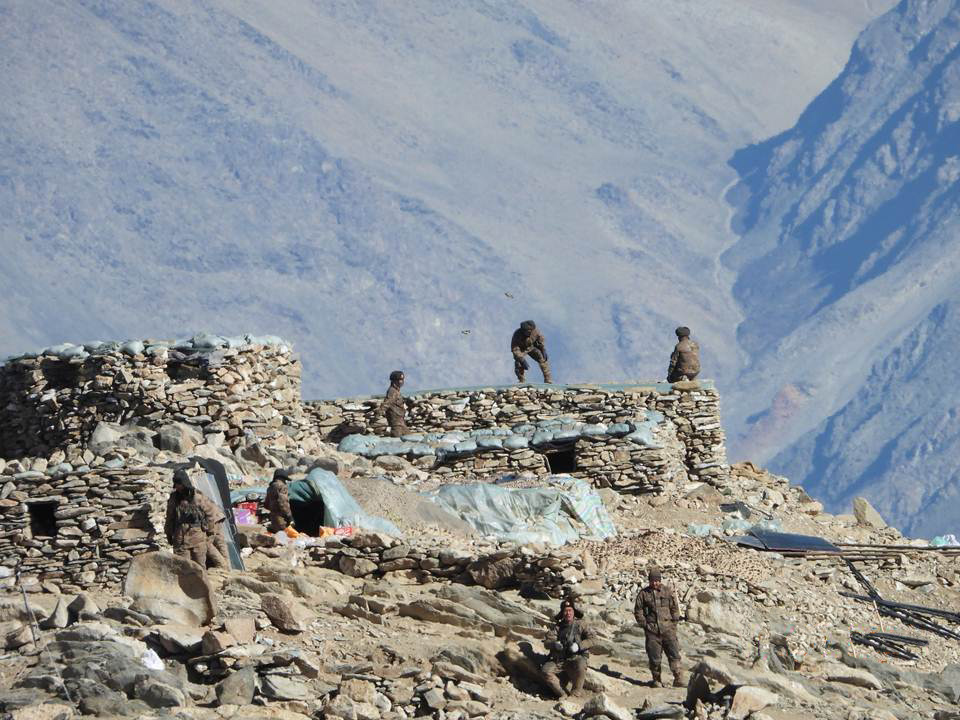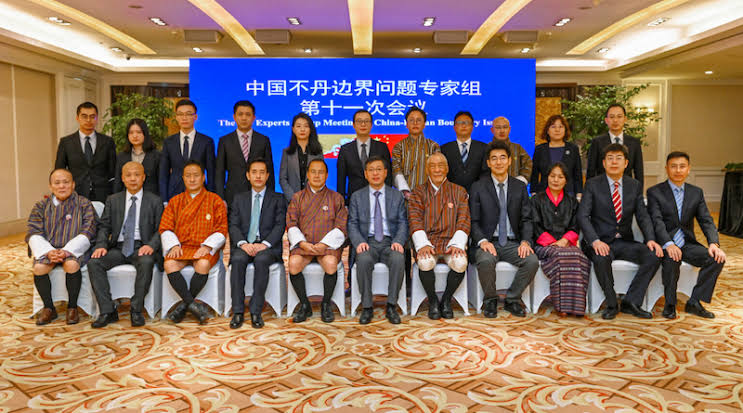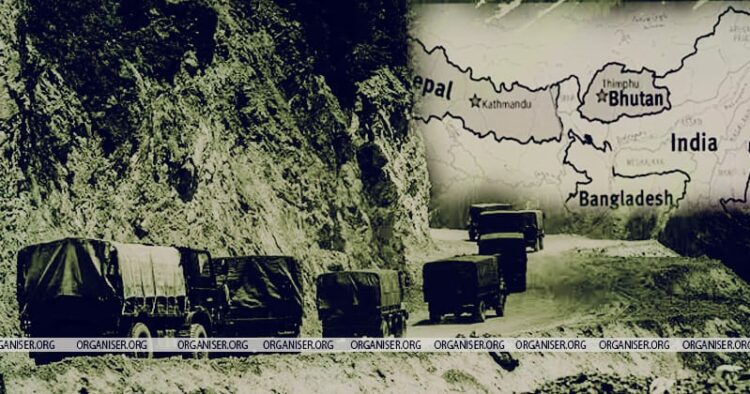Amid the perennial threat posed by the expansionist Chinese People’s Liberation Army (PLA), the Indian Government, in a pre-emptive measure, has decided to deploy paramilitary forces to guard the highly strategic Siliguri Corridor (Chicken’s neck) in times of peace.
The much-needed move from the Indian Government arrived after the Chinese Communist Party (CCP) in recent times had shown signs of desperation to commence the border talks with the kingdom of Bhutan, which has been on a halt since the Doklam standoff of 2017.
As per the reports floating in the media, the Government will deploy troops from the Border Security Force (BSF), Indo-Tibet Border Police (ITBP) and Seema Shashastra Bal (SSB) to guard the narrow stretch. Considering the threat perception of China, the Indian Government’s decision to deploy troops seems inevitable, though the Government move has been inspired by a much larger threat than what it appears.
Firstly, the ongoing tussle between the PLA and the Indian Army, which considerably elevated after the violent clashes in Galwan valley, has once again triggered the long-held mistrust between the two giant neighbours. Thus any development pertaining to the Northern borders of India is something that the incumbent Government will pay utmost attention to. Additionally, the 60 km long and a mere 22 Km wide narrow stretch at places of the Siliguri Corridor is the most highly strategic piece of the land for the nation as gaining control on this would tear apart the North-East region from the rest of the country.

The Sino-Bhutan border talks and the Chinese desperation
Like most of its neighbours, the Communist regime of China also has border disputes with the Kingdom of Thimphu. The two nations have been in a stalemate negotiating it since 1984, thanks to the infamous Salami Slicing policy of the CCP. However, after years of back and forth, the Chinese establishment in recent times has been pushing for a solution to the long-standing dispute between the borders. As per a report on Foreign Policy, despite having no diplomatic presence in Bhutan, the incumbent Chinese Government under Xi has gone to great lengths to ensure lines of communication remain open between the two countries.
The urgency showed by the Chinese side can better be accessed by the fact that just in a year of time, the representatives of China and Bhutan had made it twice to the negotiating tables. The latest of the engagement took place in Thimphu in May this year, where the two countries have agreed to push forward a three-step road map signed in October 2021. Needless to say, the eagerness shown by the Chinese side for resolving the border dispute with Thimphu is aimed at India and has the sole purpose of gaining control of the Doklam region, a trijunction strategic region that has been a bone of contention for both China and India.

China’s efforts to gain control of this highly strategic region are also evident from their willingness to exchange territories with the kingdom of Bhutan, though in their sinister attempt, the only obstacle they face is the friendship treaty signed between New Delhi and Thimphu in 1949. However, despite the treaty that authorized the Indian Government to have a say in any external threat to the sovereignty of Bhutan, the ever-changing geopolitics and the recent push by the Chinese side have led Thimphu to look for a bilateral solution to the dispute. There is no if and but that any gains made by China in the Doklam region through bilateral talks, though unlikely, would be a nightmare for India and the Quad members looking to contain the Chinese aggression in the South China Sea and Indo-pacific.
Change in Demographics
Other than the external threat posed by China, the silver piece of land is also facing a substantial threat due to the rapid pace of changing demography encircling the region. A deeper study of the pattern in which the demographics of the region have evolved in the last few decades would clearly establish the threat it poses to the sovereignty of the nation.
As per a report published by a digital portal, the region has witnessed a gradual upsurge of immigrants from outside. The report also highlighted the statement made by a political party office bearer who, in the year 2012, had claimed that the North Bengal region alone has a concentration of around 30 lakhs Bangladeshi immigrants who often try to create a disturbance by planning various schemes.
Additionally, the corridor also shares its border with the Seemanchal region of Bihar in the West, which has witnessed a sharp decline in Hindu population and alleged settlement of Rohingyas and Bangladeshi immigrants over decades. A mere study of the changing demographics in the neighboring areas of the corridor over the decades could reveal the alarming threat posed by the immigrant infiltrators.
A substantial move
Looking at the threat posed by the Chinese PLA along with the changing demography at an alarming rate, the decision to deploy troops from the paramilitary forces is a substantial move by the centre for safeguarding the sovereignty of the country. The presence of paramilitary troops, who are far better trained and efficient in tackling cross-border infiltration and containing issues pertaining to border security than the local police, would definitely help improve the situation on the ground.
Additionally, New Delhi also has to tread cautiously with their relationship with Thimphu and Kathmandu, given the fact that the probability of a large-scale incursion by PLA, who had a bloody nose in Galwan, re-attempting to alter the status quo from Doklam or Arunachal cannot be ruled out. Especially after the war-level development works carried out by the Chinese military, such as building of roads and erecting villages near Doklam and other regions for dual purposes near the Eastern side of the border.



















Comments